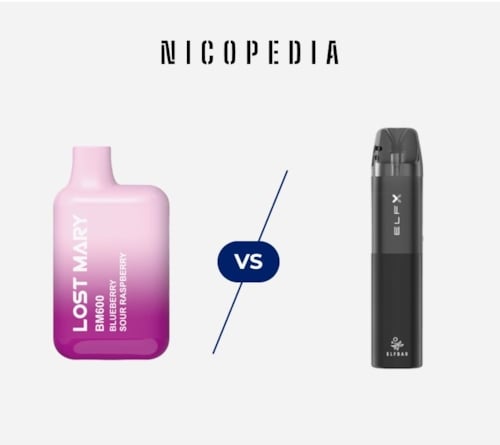Published 2022-09-23
Last update 2025-02-20
How To Quit Smoking
Quitting smoking is a personal decision, and many resources exist to support those who choose to take this step. This guide summarises NHS-backed Stop Smoking Services and support options available in the UK to help those seeking to reduce or quit smoking.

Why Reducing Smoking Can Be Challenging
Smoking is influenced by physical, mental, and social factors. According to the Special Eurobarometer 539 report by the European Commission (2023), 24% of adults in the EU still smoke, highlighting the challenge of reducing smoking rates through traditional methods alone.
In some countries, consumer-driven transitions to alternative nicotine products have led to a significant reduction in smoking rates. Sweden, for example, has seen its daily smoking rate drop below 5% as many individuals have chosen alternative products like snus and nicotine pouches instead of cigarettes.This shift demonstrates how access to alternatives can influence smoking behaviours without requiring strict governmental intervention.
Available Support & Resources
There are two main approaches that people explore when adjusting their smoking habits:
-
Going Cold Turkey – Some individuals choose to stop smoking without substitutes, while others explore alternative nicotine products. Studies suggest that this method may be more challenging for long-term smokers (Royal College of Physicians, 2021).
-
Using Support Tools – According to NHS guidance, structured programmes such as nicotine replacement therapies (NRT) and behavioural support services are available for those exploring alternative pathways (NHS, 2023).
Three Stages of the Process

Breaking the process into manageable stages can make transitioning easier.
1. Preparation
- Setting a realistic timeline to reduce or quit smoking has been associated with higher success rates, according to NHS data (NHS, 2023).
- Identifying motivations and challenges may help individuals adjust their approach.
- Exploring available NHS support and professional guidance can provide structure.
2. Action
- Some individuals find that adjusting their environment, such as removing cigarettes and smoking-related items, helps manage nicotine habits.
- Engaging in alternative activities or structured programmes has been noted as a helpful strategy in government-backed research (Public Health England, 2022).
- Building a support network, including NHS services, peer groups, or family, may provide encouragement and accountability.
3. Maintenance
- Recognising milestones and progress can help reinforce long-term adjustments.
- Studies suggest that planning for setbacks and reassessing strategies may improve consistency in behavioural changes (European Commission, 2023
The Role of Vapes and Alternative Products

The UK Royal College of Physicians (2021) reports that vaping is 95% less harmful than smoking, which is why some adult smokers turn to it as an alternative. Government initiatives in England now offer vape starter kits and behavioural support to nearly 1 in 5 smokers. Health officials also recommend that e-cigarette packaging clearly states that vapour is likely far less harmful than tobacco smoke.
Alternative nicotine products, including nicotine pouches and snus, have played a role in reducing smoking rates in countries like Sweden. Many adult nicotine users in Sweden have transitioned away from smoking by using these products, contributing to their notably low smoking prevalence (European Commission, 2023). While these products are not part of NHS-backed stop smoking services, their impact in other countries highlights the role of consumer choice in smoking reduction strategies.
Some regions have reported findings in structured programmes involving vapes:
- In Darlington, NHS data suggests that 90% of individuals who participated in a programme using nicotine vapes reported a successful transition away from smoking.
- Calderdale and Somerset have shown similar findings, with reported transition rates of 86% (Public Health England, 2022).
Many adult nicotine users transition to vaping through support programmes, according to government data. Those considering nicotine vapes as an option should check with local NHS Stop Smoking Services for more information on regulated programmes.
Additional Support Resources
Finding the right support can make a significant difference.
- Local Stop Smoking Services – Many regional programmes provide expert guidance and free resources such as NRT or vape starter kits (NHS, 2023).
- Online Communities – Public health reports indicate that connecting with others on a similar journey may provide motivation and shared experiences (European Commission, 2023).
- NHS Support – NHS resources include apps, quit plans, and helplines that offer structured assistance.
Potential Benefits of Transitioning Away from Smoking

Studies have indicated that individuals who reduce or quit smoking often report changes beyond just health-related factors:
- Financial Savings – Reports suggest that many individuals find reallocating funds previously spent on cigarettes beneficial (European Commission, 2023).
- Lifestyle Shifts – Some individuals report changes in taste, smell, and daily habits (Royal College of Physicians, 2021).
- Personal Goals – Studies show that setting personal benchmarks related to nicotine use can help with long-term adherence (NHS, 2023).
Final Thoughts

While smoking cessation remains a personal journey, evidence from the UK and internationally suggests that accessible nicotine alternatives can contribute to reducing smoking rates. Sweden’s experience demonstrates how consumer-driven harm reduction strategies can support this process without excessive regulatory intervention. The availability of NHS-backed stop smoking services, along with broader access to alternative nicotine products, allows individuals to make informed choices about their path towards a smoke-free lifestyle.
For more details on UK Stop Smoking Services and success rates, visit NHS online resources.
Related articles




